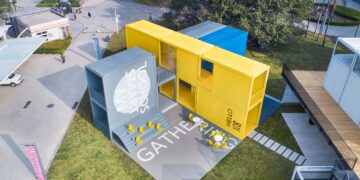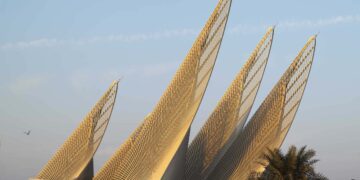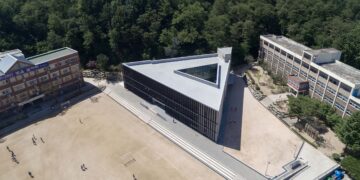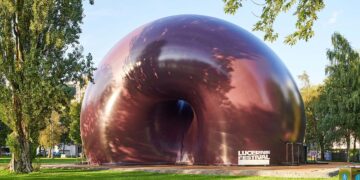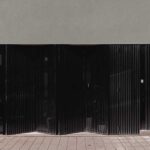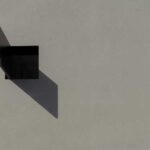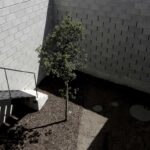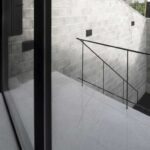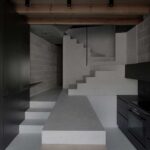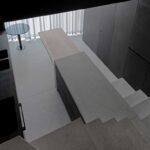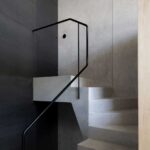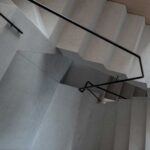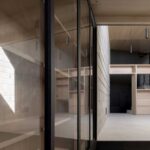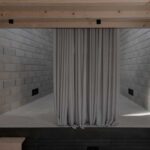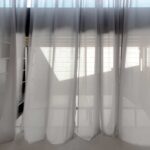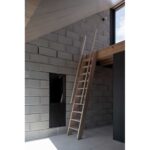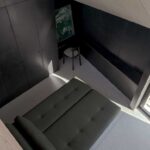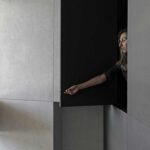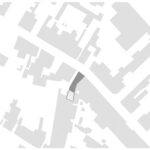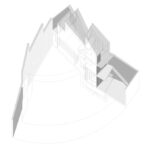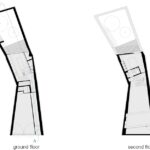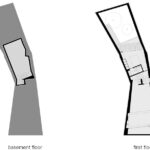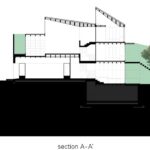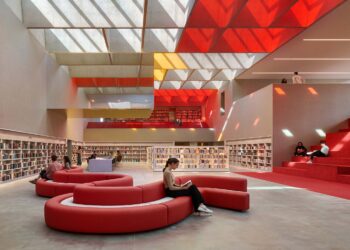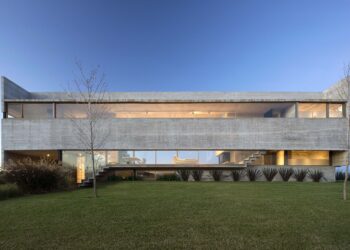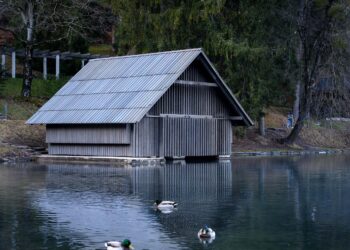A new concrete residential building on a semi-abandoned construction site brings old and new structures into dialogue
거친 재료와 매끈한 재료의 병치로 다채로운 실험을 한 포르투갈 주택
NPS Arquitectos | NPS 아르끼떽또스
.

.
It was probably a few hours after Zeca Afonso’s song Grândola Vila Morena was played on the radio (the coded call to arms triggering Portugal’s 1974 Carnation Revolution) that construction halted on the building site of this house. It became a ruin of an anonymous residential building, abandoned for 42 years, before construction was resumed; the peculiar lot has finally been converted.
1974년 4월 25일, 포르투갈의 국영 라디오에서 민중 저항 가수 제카 아폰수의 노래 ‘그란돌라, 검게 그을린 도시’가 흘러나왔다. 이 노래를 신호탄으로 좌파 청년 장교들이 주도한 시민 혁명, 일명 ‘카네이션 혁명’이 시작되었다. 몇 시간 후, 한 공사장의 뚝딱거리는 연장 소리가 멈췄고, 짓다 만 집은 그대로 버려졌다. 이름도 없이 방치됐던 이곳은 42년 만에 공사가 재개되며 새로운 공간으로 태어났다.
.

.
Project: The Broken House / Location: Porto, Portugal / Architects: NPS Arquitectos / Authors: Rui Neto, Sérgio Silva / Collaborators: Francisco Corte, Mariana Santos / Engineers: Tisem Engenharia, Lda / Contractor: ACA Sociedade de Construções, Lda / Woodwork: José Reis e Filhos, Carpintaria e Mobiliário / Metalwork: Metaldri, Construções Metálicas, Lda / Surface Area: 170m² / Completion: 2020 / Photographs: Cunha Pimentel
.



.
The eccentrically-shaped terrain is part of an irregular urban mesh, precarious and industrial, but consolidated and defined by folds and breaks. Like the waist of a body, the central area of the site is very narrow, widening both to the north and south. The found structure of pillars and beams in reinforced concrete is generous, almost excessive.
.




.
대지는 불규칙한 도시 구조 속에 아슬아슬하게 있는 만큼 꺾이고 접힌 것이 특징이다. 잘록하게 들어간 중앙부는 남과 북을 향해 넓어진다.
원래 있던 구조물과 새로 덧붙인 부분의 조화를 고려했다. 우선 과거에 세운 기둥과 보 위로 철근 콘크리트를 과하다 싶을 만큼 넉넉하게 둘렀다. 건물 중앙부에 계단을 새로 배치함으로써 전체적 균형을 꾀했고, 기존 구조에 가해지는 압력을 줄이도록 나무로 만든 작은 보를 설치했다.
.




.
The proposal arises from the dialogue between this existing structure and the new one. The staircase, placed at the waist of the lot, works as the new structural element that reconciles in itself the stabilization of the whole. Reducing the load on the existing structure, the secondary beams are all in wood. The irregularity of the plot has repercussions on the section, unfolding the two levels to the front (north) into three sub-levels to the interior, facing the back yard (south). Despite the geometric irregularity, the different parts of the house keep a high level of permeability. Rather than holding just one function, the rooms seek to be versatile places with their own spatial and light specificities, capable of housing different uses.
.



.
외벽은 출입문과 뒷마당을 포함한 건물 전체를 감싸며 바깥 도로와 단절시킨다. 동쪽과 서쪽, 두 면에 걸친 담장은 높게 올려 외부와 경계를 두었다.
건물 전면부는 2층, 뒷마당 방향은 3층 규모로, 각 부분은 출입이 자유롭다. 실내는 다양한 용도에 맞추어 다목적으로 변신하고, 저마다 다른 공간과 빛의 특성을 갖는다. 자연광은 내부를 구석구석 비추며 활기를 불어넣기도 하고 공간을 분할하기도 한다. 촘촘하게 짜인 건물은 반복되는 내외부 속에서도 조화를 잃지 않는 쉼터다.
프리캐스트 콘크리트와 콘크리트 블록, 테라조 타일, 목재 패널이 한데 섞여, 거친 벽면과 매끈한 표면 사이의 긴장감을 만든다. 삶을 향한 다채로운 실험이 이루어지는, 자유롭고, 은밀하고, 활기찬 공간. 이것이 바로 건축가가 이루고자 한 목표다.
.



.
The house is sheltered from the outside, closing itself off behind two big blind walls (east and west), and winding itself away from the public road (north) through a façade punctuated by a wicket gate and a patio, lit from above. From here it relates generously with the interior of the back patio (south).
The building is a compact unit, a refuge with recurrent relationships between interior and exterior spaces, but always intimate. The natural light sometimes reveals and animates, sometimes cuts through the spatial composition.
The almost non-existence of surface treatments unveils a tension between the roughness of the surfaces and the adornment caused by the joints of the materials, such as the in-situ concrete, the concrete block, the terrazzo and the wooden panels.
The architects’ main purpose was to build a live container, but in a secretive way, which should confine without oppressing, creating the base for a versatile laboratory for living.






